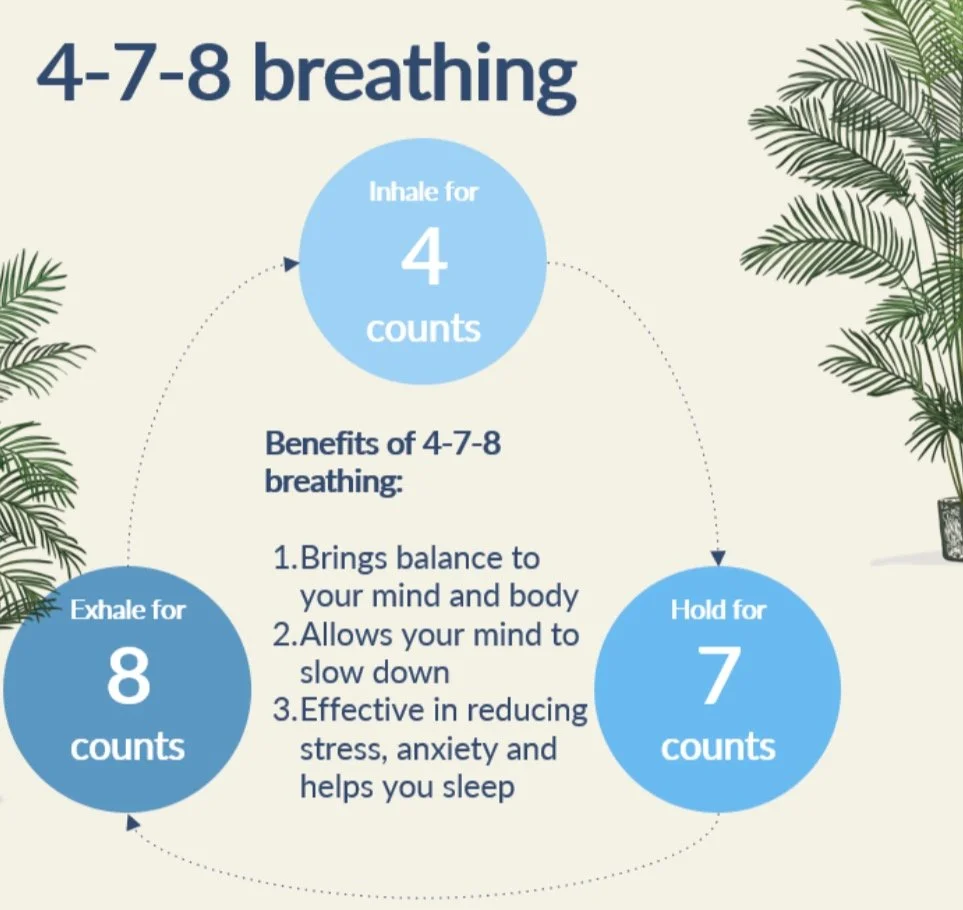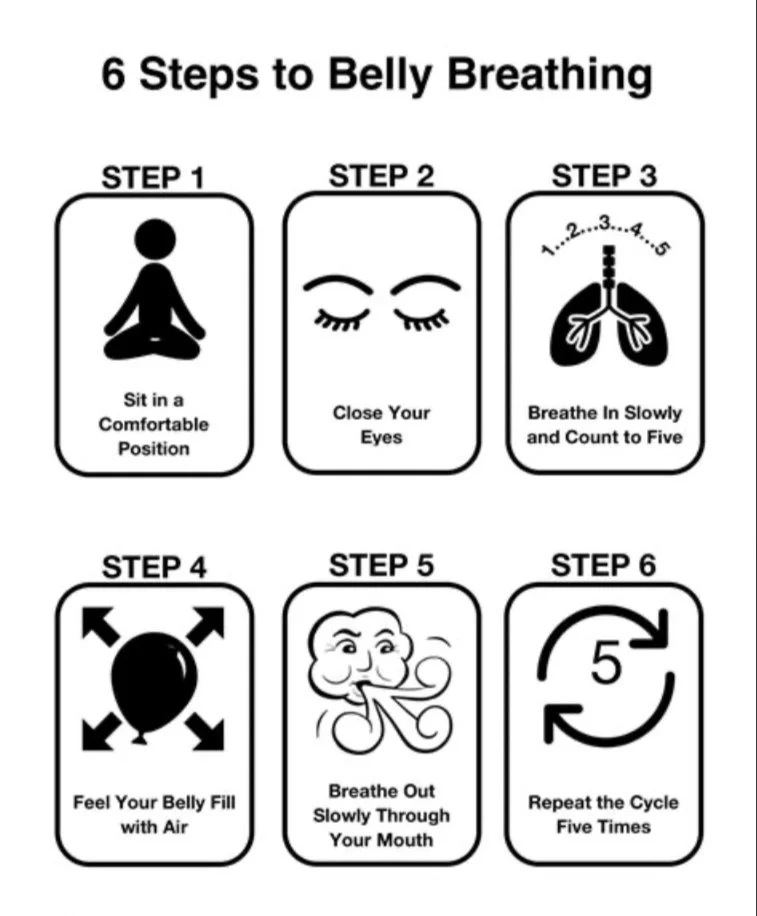The Power of Breathing: How It Influences the Parasympathetic and Sympathetic Nervous Systems
If you’ve ever practiced yoga, meditation, or any form of mindful relaxation, you’ve likely encountered the concept of deep breathing—sometimes referred to as “belly breathing.” What might seem like a simple act is actually one of the most powerful tools for mental, physical, and emotional regulation.
Breathing is unique: it can occur automatically, controlled by the brainstem, but it can also be consciously regulated. This gives us a rare opportunity to directly influence the autonomic nervous system—specifically the sympathetic and parasympathetic branches.
In this article, we’ll explore how breathwork affects these systems, why it matters, and how you can harness this ancient yet science-backed technique to reduce stress and improve overall well-being.
Understanding the Autonomic Nervous System (ANS)
The autonomic nervous system (ANS) regulates involuntary bodily functions such as heart rate, digestion, respiratory rate, and blood pressure. It consists of two main branches:
1. The Sympathetic Nervous System (SNS) — “Fight or Flight”
This system is activated during stress or perceived danger. It prepares the body for action by:
Increasing heart rate and blood pressure
Dilating pupils
Slowing digestion
Quickening respiration
SNS activation is useful in emergencies, but chronic stimulation (as seen in modern high-stress lifestyles) can lead to anxiety, insomnia, cardiovascular strain, and other issues.
2. The Parasympathetic Nervous System (PNS) — “Rest and Digest”
In contrast, the PNS helps the body relax, recover, and conserve energy. When dominant, it:
Slows the heart rate
Stimulates digestion
Enhances immune function
Encourages restorative processes
Deep breathing activates the PNS, shifting the body from a stressed state into a calmer one. This is why practices like meditation, pranayama, and diaphragmatic breathing are so effective for stress management.
The Science Behind Breathing and Nervous System Regulation
The connection between breath and the nervous system is not just spiritual—it’s neurological and physiological.
Inhalation vs. Exhalation
Inhalation typically increases heart rate slightly and stimulates the sympathetic nervous system.
Exhalation, especially when prolonged, activates the parasympathetic nervous system and slows heart rate—a process known as respiratory sinus arrhythmia.
This is why many breathing techniques emphasize long, slow exhalations (e.g., 4-7-8 breathing).
Left vs. Right Nostril Breathing
In yogic tradition, it’s believed that:
Left nostril breathing activates the parasympathetic response
Right nostril breathing stimulates the sympathetic system
While scientific validation is still evolving, nasal dominance has been shown to affect autonomic balance. Practices like Nadi Shodhana (alternate nostril breathing) aim to balance both systems.
Chest Breathing vs. Belly Breathing
Chest breathing (rapid and shallow) is associated with stress and SNS activation
Belly breathing (slow and deep, using the diaphragm) enhances PNS activation
Training your body to default to diaphragmatic breathing can dramatically improve your stress resilience and physical well-being.
The Benefits of Deep Breathing
Deep, conscious breathing is a low-cost, high-impact practice. Here’s what it can do for you:
Calms the nervous system and reduces cortisol (stress hormone)
Lowers heart rate and blood pressure
Improves sleep and reduces insomnia
Enhances focus and emotional regulation
Interrupts negative thought loops and reduces anxiety
Boosts performance by improving oxygen delivery and mental clarity
At Evoke Movement, we integrate breathwork into every session—whether it’s strength training, rehabilitation, or mobility. We’ve found that anchoring breath into movement unlocks a deeper level of performance and recovery.
How to Get Started with Breathwork
1. Try Box Breathing
Inhale for 4 seconds
Hold for 4 seconds
Exhale for 4 seconds
Hold for 4 seconds
Repeat for 1–5 minutes. This technique is used by Navy SEALs to stay calm under pressure.
2. Practice 4-7-8 Breathing
Inhale through the nose for 4 seconds
Hold for 7 seconds
Exhale through the mouth for 8 seconds
This method is helpful before sleep or during moments of anxiety.
3. Use Diaphragmatic (Belly) Breathing
Lie down with one hand on your chest and the other on your belly
Inhale deeply through the nose, letting your belly rise
Exhale slowly, letting your belly fall
Practice for 5–10 minutes daily
Final Thoughts
Your breath is always with you—it’s your most accessible wellness tool. With just a few minutes of daily practice, you can shift your nervous system, calm your mind, and enhance your physical performance.
Incorporating conscious breathing into your day isn’t just relaxing—it’s transformative. Whether you're preparing for a big meeting, winding down from a workout, or managing chronic stress, breathwork can center you in the present and empower your body to heal.
Want to Learn More or Need Help Getting Started?
Join our Evoke Online Program, where breathwork is integrated into every offering.
Speak to Aaron today to begin your journey toward a more relaxed, resilient you.
References & Further Reading
Brown, R. P., & Gerbarg, P. L. (2005). Sudarshan Kriya Yogic Breathing in the Treatment of Stress, Anxiety, and Depression: Part II—Clinical Applications and Guidelines. Journal of Alternative and Complementary Medicine. DOI: 10.1089/acm.2005.11.711
Jerath, R., Edry, J. W., Barnes, V. A., & Jerath, V. (2006). Physiology of Long Pranayamic Breathing: Neural Respiratory Elements May Provide a Mechanism That Explains How Slow Deep Breathing Shifts the Autonomic Nervous System. Medical Hypotheses, 67(3), 566-571.
Noble, D. J., & Hochman, S. (2019). Hypothesis: Pulmonary Afferent Activity Patterns During Slow, Deep Breathing Contribute to the Neural Induction of Physiological Relaxation. Frontiers in Physiology. https://doi.org/10.3389/fphys.2019.01176
External Resources
Cleveland Clinic: Breathing Exercises for Stress
Headspace Guide to Meditation and Breathing
Podcast on Breathing & Nervous System Regulation
Podcast: The Root Cause Medicine Podcast
Episode: How to Calm Your Nervous System for Better Health with Dr. Cathleen King
Overview: Dr. Cathleen King, a Doctor of Physical Therapy and qualified Neuroplasticity Educator, explores the profound impact of breathwork and vagal tone on nervous system regulation. She discusses practical steps to support nervous system balance and resilience, emphasizing the role of breath in managing stress and promoting overall well-being. Rupa Health
Podcast on Trauma & Nervous System Regulation
Podcast: Red Beard Somatic Therapy Podcast
Episode: E60: Healing Trauma and the Highly Sensitive Nervous System with Ruth Milsten
Overview: Ruth Milsten, a trauma-informed therapist, shares insights into healing trauma through nervous system regulation. She offers practical self-regulation techniques, including breathwork, grounding exercises, and movement practices, to help individuals shift from states of anxiety and overwhelm to calm and balance.redbeardsomatictherapy.com+1redbeardsomatictherapy.com+1





